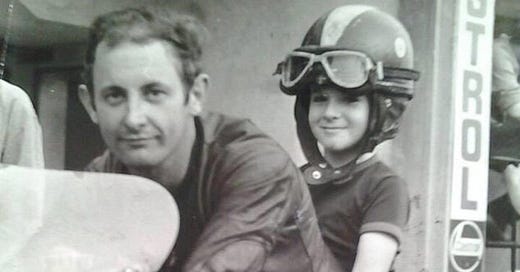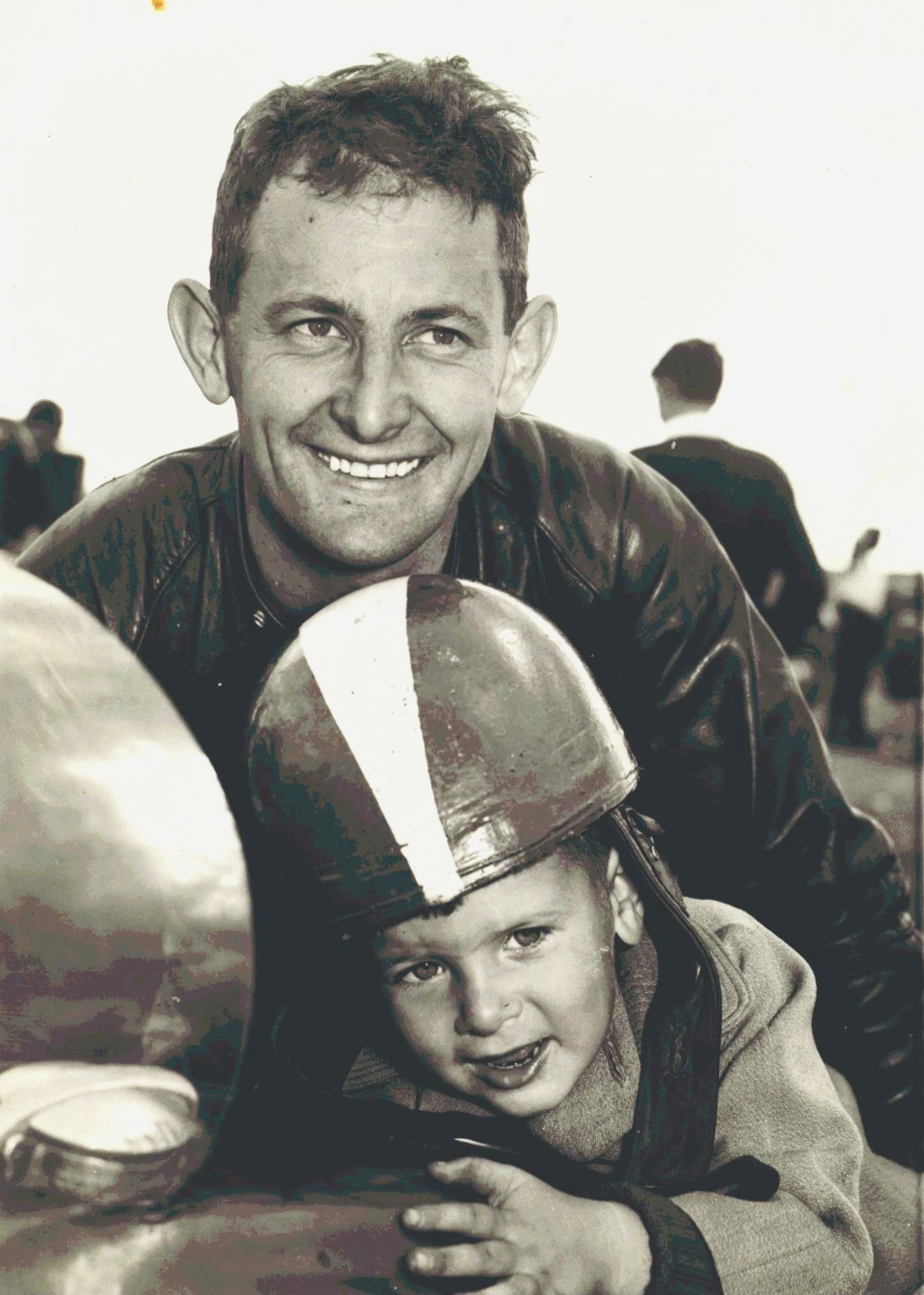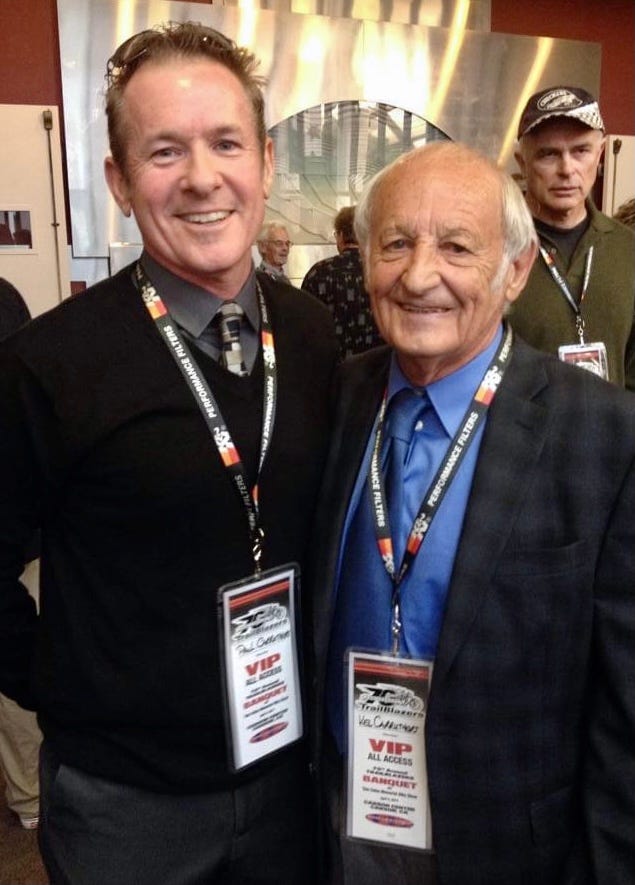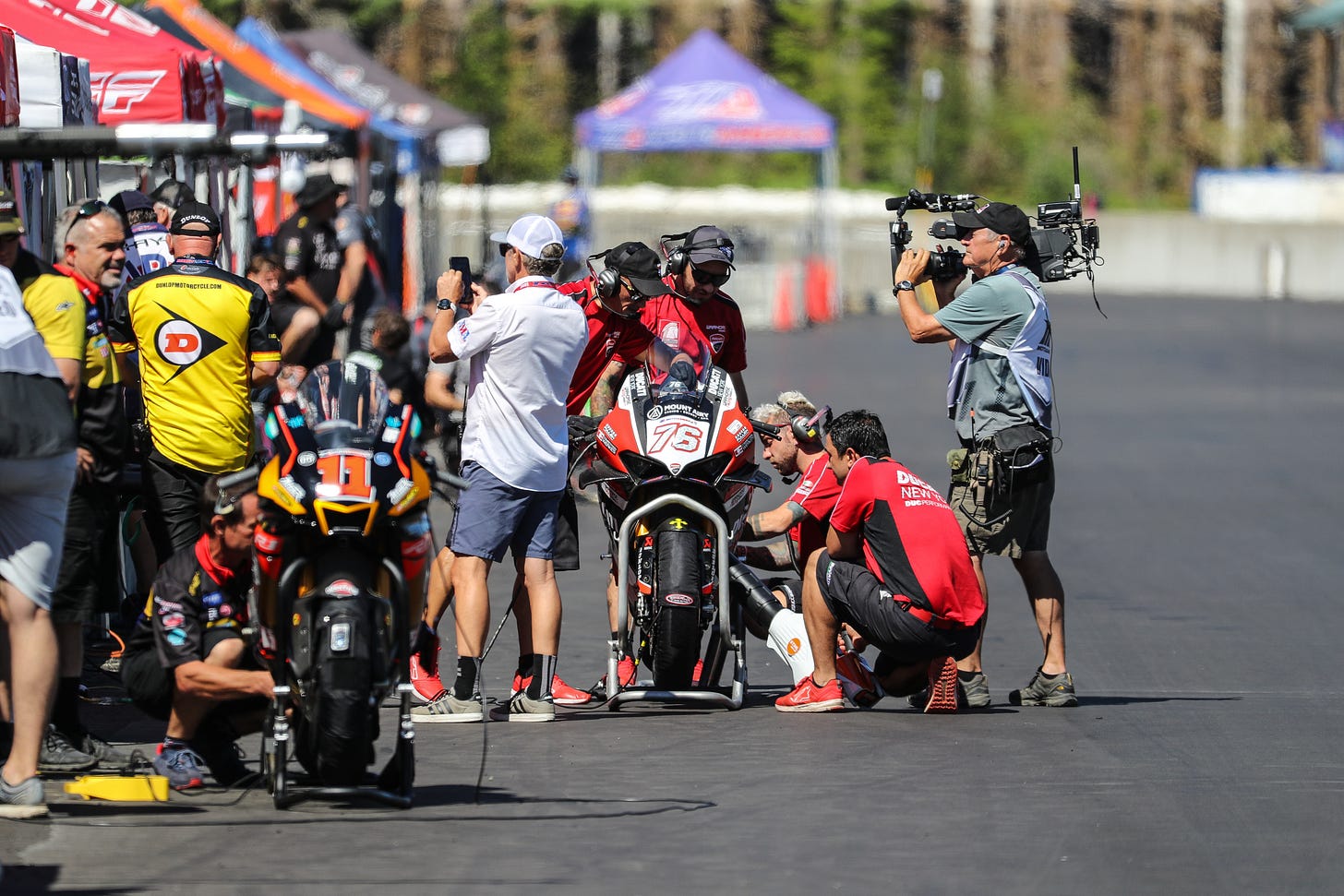For many of us, motorcycles mean pleasure, adventure and escape. For Paul Carruthers, it’s always meant racing, pure and simple. His motorcycle DNA is probably stronger than anyone I’ve known, met or read about, so as MotoGP takes a well-deserved five-week summer break, here’s some race storytelling to fill the gaps and your head.
Motorcycles and racing were your obvious destiny, being the son of a 250cc GP world champion and multiple GP world champion race team manager, not to mention the grandson of a motorcycle shop owner who was also a multi-time Australian Sidecar Speedway Champion. Tell me about your childhood, and all the places you lived, visited, and experienced before setting off on your career.
Well, it all began in Australia. My dad was basically winning everything in Australia that there was to win, and he decided to chase his dream of being World Champion. That, obviously, meant leaving Australia. So, he packed up the family and off we went. Getting there was a bit of an adventure. My father and grandfather flew to Europe and got everything set up while my mom, grandmother, older sister and I went by ship to Europe.
Six weeks later, we met up and that started our European adventure. From there I traveled the world as we followed the Grand Prix circuit as well as other races where they would pay Dad start money. Basically, the more you raced, the more money you made so we traveled virtually non-stop to races. It all started in 1966 and we stayed in Europe through the 1970 season with my dad winning the 250cc World Championship in 1969 and finishing second in the title chase in 1970.
We would go back to Australia in the off-season but other than that we lived in a caravan for all those years, traveling to basically every country in Europe – from the Isle of Man TT to races in little towns on the Mediterranean coast and all tracks in between.
In 1970, my dad raced in the 250cc race at Daytona and won. Don Vesco offered him the chance to do the 1971 season in the U.S., so we ended up coming to America. We were only supposed to be here for a year, but he did really well, and we liked living in San Diego. Again, he worked on his own bikes, had a lot of success, and that turned into him ultimately running Yamaha’s U.S. team, working with Kenny Roberts, etc. And then, in 1978, he went back to Europe with my mom, younger sister and with Kenny and his family, and I joined them during the summer when I finished school. That was a great summer. Kenny really took them by surprise, and we had a lot of fun and did a lot of winning, which always beats losing.
Recently, MotoSport’s MotoGP reporter Mat Oxley wrote a terrific article “Inside a MotoGP Rider/Crew Chief Marriage”, referencing several conversations he had with your father Kel about Papa Carruthers’ relationship with Kenny Senior. Is ‘marriage’ an appropriate description of the relationship between a GP-winning racer and his crew chief?
Yes, I think that’s appropriate. It’s a lot like a marriage in that you have to have a solid relationship with a lot of trust, and you have to have each other’s backs. You have to be able to fight and make up and you also have to be able to tell the other person when they are wrong.
My father was the perfect person to work with Kenny. He’s patient, calls a spade a spade, he’s an incredibly hard worker and he doesn’t like losing. I think it was also valuable that he was a World Champion who had to work hard for everything he achieved.
Back in his day, if you wanted to make your bike better, you had to do it yourself. You had to cut it in half to make it shorter, you had to make your own parts to make it better. You couldn’t go to the local shop and buy performance parts. He taught Kenny how to road race in America and, when they went to Europe, he led Kenny around and basically taught him how to survive not only GP racing, but the world. My mom and dad took Kenny under their wings and treated him like a second son. It all worked out rather well.
You’ve been MotoAmerica’s Communications Manager since 2014. What does your job entail in the off-season, and what does a typical race week before and after each event look like for you?
The race weeks are hectic, but I like it that way. I write press release previews before each race in the week leading into the next event. We also pump out a lot of social media and whatever other press releases and/or features for the website during the week and weekends. We also help with any local media that may be covering the event, setting up TV interviews in the local market, etc.
The weekends themselves are wide-open and we put in long days. On race days, I do the podium ceremonies and those are followed by press conferences with the top three from each race and that just repeats itself for usually five or six races per day for the two days.
I work with the riders, get them where they need to be, make sure they get what they need to help us promote the series, etc. Sometimes it’s a bit like herding kittens, but I’m very fortunate to have really good guys and girls in our paddock. After the events, we try to catch our breath for a day and then it’s right back to the grind.
I also do a weekly podcast with Sean Bice called “Off Track With Carruthers And Bice”. We have a guest every week and it’s usually a good time. It’s a conversational podcast with someone from our series and we just completed our 140th episode and haven’t missed a week since we started.
As for the off-season, it can actually be more difficult than the race season in some ways because you have to come up with content at times when there’s not much going on. The pace is a bit slower, but it seems like before you know it, you’re working on the first round of the series. We try to do a lot of planning in the off-season and, of course, there are a lot of press releases as well when we start to announce new sponsors, etc.
What’s it like working for and with 3-times GP world champion and MotoAmerica boss Wayne Rainey?
I’ve known Wayne for a long time, and he won the first race I ever covered for Cycle News in 1985. I covered his career here and also in Europe. And I’d see him when I’d go to Europe off and on. Wayne was a good guy when he raced and he’s even better now that he’s older and not hounded by the pressure of trying to be World Champion every year.
That being said, he’s very meticulous and pays attention to every detail – all things that made him the racer that he was and the president that he is. He’s fair and he cares about the sport and our riders more than you can even imagine. One thing I’ve learned is… you always need to know lap times when he calls and wants to know how things are going when he’s not there. It’s all about the lap times. He’s a racer through and through so that will never change.
The "King of the Baggers" series seemed kinda cheesy when it was announced, but after three races it appears to be getting eyeballs. How did the series evolve, and who were the authors?
I’m a bit of a purist so I have to admit I had my doubts. That lasted until the first practice session at Laguna Seca last year when I watched Tyler O’Hara and Hayden Gillim come over the hill and down into turn two with the back end of these massive motorcycle stepped out. It was an eye-rubbing moment for sure.
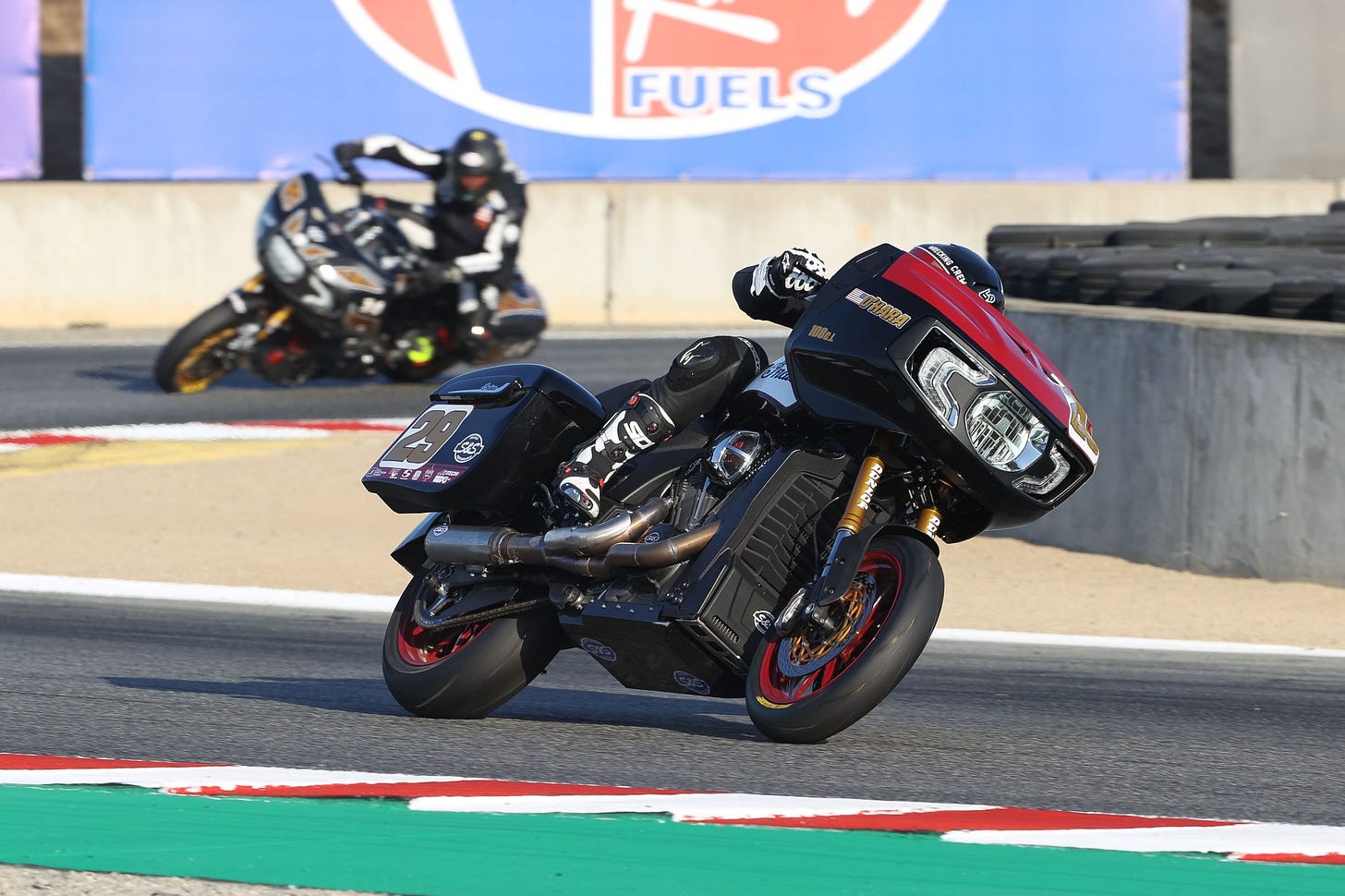
Wayne actually learned of the idea and, surprisingly enough considering his background, he was all in from the beginning. There were some people who complained about it and made jokes early on, but not many did after they actually saw it. Pure and simple, it was a hit. It’s been a great addition to the show and the Road America race was even better than Laguna. Not to mention there is a rivalry between Harley and Indian that is very real. It’s good fun.
They say ‘content is king’ and you were certainly master of your domain at Cycle News for 30 years, publishing a weekly print racing magazine. Walk me through a typical publishing cycle.
Wow… I have to think back. Cycle News is really one of those things where if you don’t know, you don’t know. To work there, you had to be passionate, and you had to be able to generate quality content quickly. To be successful there, you had to really want to work because it was a true labor of love.
If you covered a race on the weekend, you’d fly back as soon as you could after the race whether that be the last flight on a Sunday night or the first flight on a Monday morning. And no matter what, when you got back to the office you needed to have your story finished and ready to go. And the fun was only just beginning.
Mondays were hell as they started early and went late, but they were also rewarding when you saw the finished product on Tuesday. The rest of the week was spent writing bike tests, interviews, features and editing copy from freelancers. If you survived, you came out of it being able to handle any job in the industry and that’s been proven over and over.
The magazines would steal my guys all the time, but our relationships always remained solid. With the exception of very few, every one of the staffers that worked at Cycle News met with success no matter where they went, and they always knew where it started. I learned a lot from those who were there when I started, and I hope a lot learned from me. It was a period of my life that made me what I am today and the work ethic I learned there will pay dividends for the rest of my life. It was always a tightly knit group because we were all in the same boat. We worked hard, but we always had a lot of laughs along the way.
In a Cycle World interview with Peter Jones from 2015, you lamented churn-alism, stating that “part of journalism has lost its soul because of the Internet.” Which motorcycle publications and editors do you enjoy these days?
Good journalists are good journalists no matter what medium their content falls on. Magazines are few and far between these days so most of the motorcycle reading I do is on the Internet. I don’t read a lot of bike tests any more as my focus is, as it really has always been, is on racing.
That being said, most of the stuff I read is written by the Mat Oxleys of the world, guys who write well and give me info that I wouldn’t know without them being at the GPs. There are also some young guys in the GP paddock that I’ve never met that seem to be keen, accurate and fair and I read their stuff as well. I also still read Cycle News, of course, mostly to make sure they are doing a good job for MotoAmerica (laughs).
I still prefer a well-written story to a video, but I also like to stay relevant because of my job so I can’t say that I don’t enjoy a well-done video as well. I work with young guys, and I try to soak up all the new stuff that I can. I try not to be the “back in the day” guy, but I also like to make sure I work some history into the dialogue every once in a while, and they seem to enjoy it. It’s good for them to know how it used to be.
We had quite a run from King Kenny through Kevin Schwantz, picking up again with Kenny Roberts Jr. in 2000 and Nicky Hayden in 2006. Fifteen years is a long championship drought. Looking to the future, might the United States see a return to its former MotoGP glory in this decade with Joe Roberts, Cameron Beaubier and other MotoAmerica alumni?
I think we see that happening now. With Joe and Cameron in Moto2 and Garrett Gerloff in World Superbike and also getting a one-off in MotoGP, we have three of our best guys racing internationally and that makes us happy.
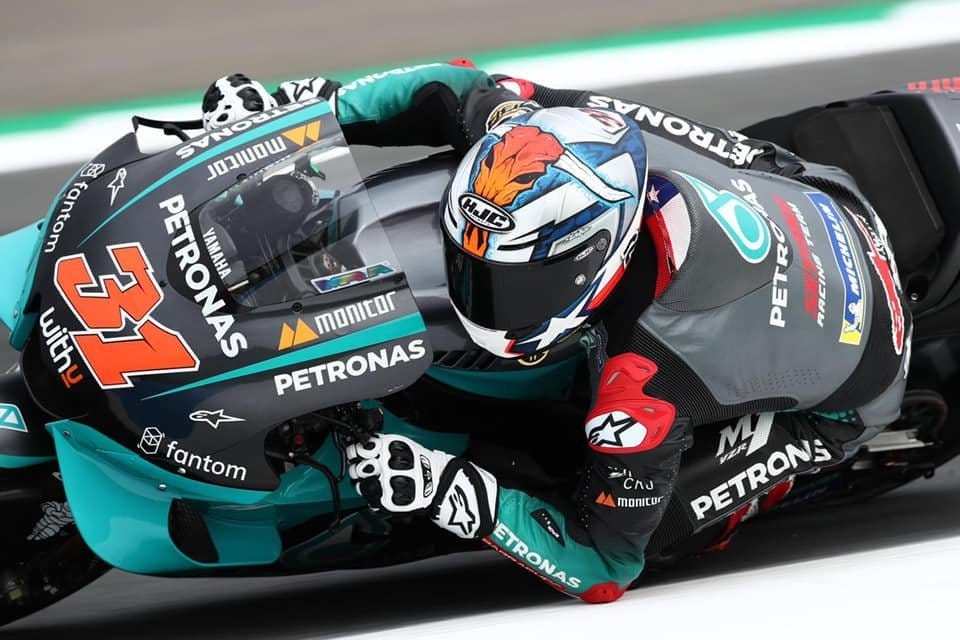
Wayne set this series up so that guys could leave here and know how things work, know what stiff competition is like… know how to go fast and race hard on good equipment. It’s not easy by any means, but we know those guys are capable of great things and that leads the kids here to have someone to look up to and to know that with some talent and hard work, they could also get there. It all builds on itself, and we are still in the early days.
For all we know our next World Champion might be in Junior Cup or Supersport, but we think he/she is going to get there. We went from having Nicky there to having nobody there and it’s been until Joe Roberts and now Cameron and Garrett to change that.
Now we have three there and we hope it’s now the beginning of the end for that drought. It also shows the competitiveness of our series when riders from overseas come here to race. That’s how it was before with the Anthony Goberts, the Troy Corsers, etc. racing here and then going on to the World Championships.

